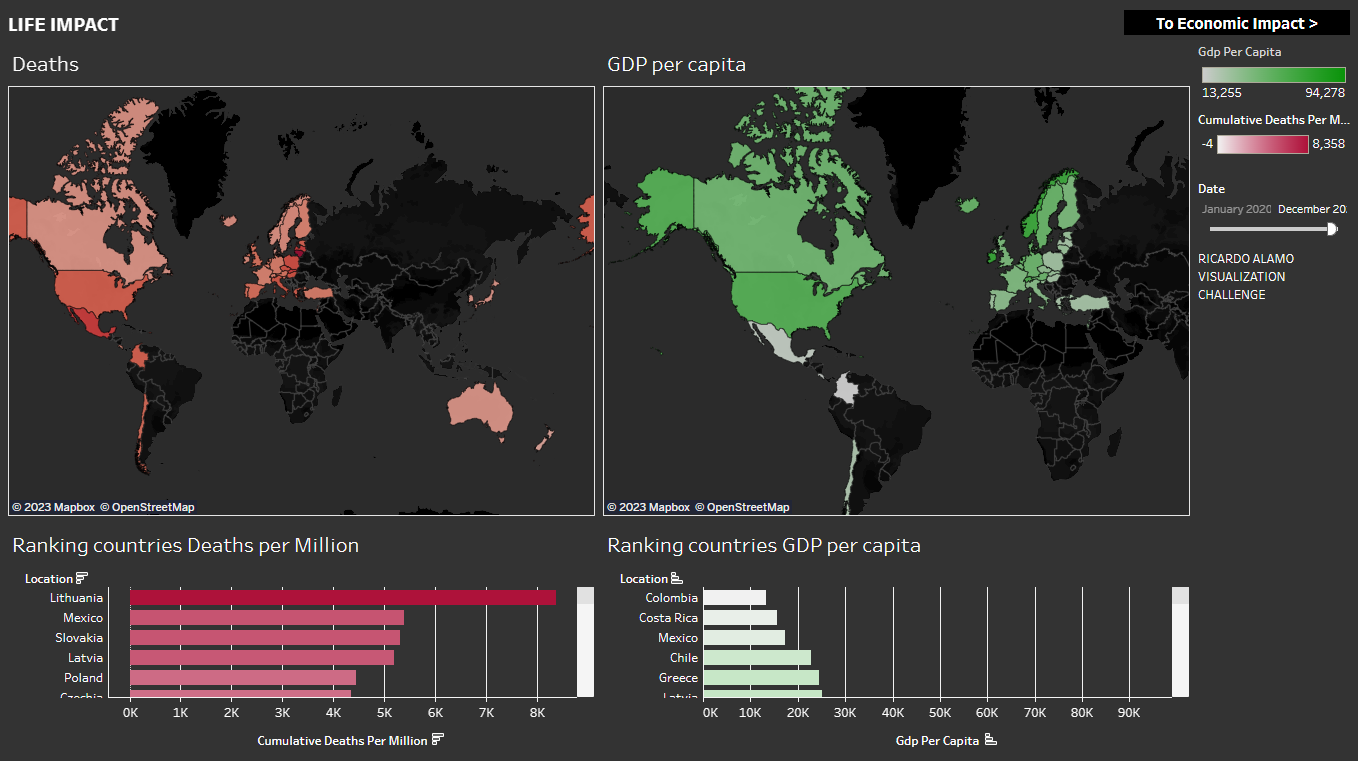The primary goal of this project is to investigate and visualize the economic and social impact of the COVID-19 pandemic in the United States and other OECD countries, focusing specifically on the period from 2019 to 2023. The year 2019 serves as a pre-pandemic benchmark for the analysis.
This project comprises three main sections:
1. US Market Analysis: For this segment, financial data pertaining to three major indices - S&P 500, Dow Jones, and NASDAQ - were extracted from Yahoo Finance using 'yfinance'. Additionally, the 10-year treasury yield data was also collected as an economic indicator. This data set will provide insights into the US economy's trajectory before, during, and after the pandemic.
2. International GDP Analysis: This section seeks to broaden the perspective beyond the US, focusing on the GDP growth of OECD countries. These countries were selected due to the reliability of their data. The weekly GDP growth data was sourced from the OECD's website and will be used to compare the economic impact of the pandemic internationally.
3. COVID-19 Data Analysis: The final section of this project leverages data from Our World in Data to explore the progression of the COVID-19 pandemic in OECD countries.
This comprehensive approach, covering market performance, GDP growth, and pandemic progression, provides a multi-faceted perspective on the complex repercussions of the COVID-19 pandemic.
Please review the Tableau visualization here
After analyzing the data and reviewing the dashboard, the following conclusions can be drawn:
1. United States: The S&P 500, chosen as the main market indicator, shows a sharp decline in March 2020, marking the onset of the pandemic. Alongside this, the 10-year Treasury yield significantly drops due to the Federal Reserve slashing interest rates to near 0% as a response to stimulate the economy. Nevertheless, the market recovers within six months, reaching new heights.
2. Global Impact: On analyzing GDP growth per week per continent, Europe appears to be the most affected. However, it also demonstrates the quickest recovery, returning to positive growth just 13 months after the initial dip.
3. Role of Vaccination: The vaccination records, beginning in June 2021, coincide with economic recovery across all continents and the US market rebound in 2021, underscoring the critical role vaccination played in economic restoration.
1. Initial Impact: The most heavily impacted regions during the early stages of the pandemic were the US and Europe. Early data shows no correlation between GDP per capita and the number of deaths.
2. Evolving Impact: As time progressed, wealthier countries saw a decline in death rates, while developing countries like Mexico, Lithuania, and Slovakia rose in death rate rankings. This trend indicates a correlation between resources and pandemic-related deaths.
Evidently, the COVID-19 pandemic had significant economic repercussions. However, the economies, both of individual countries and globally, showed resilience with recovery periods ranging from one to one-and-a-half years. The US stock market rebound was even more rapid, taking only six months to reach new highs.
In terms of life impact, the data suggests that wealthier countries with more resources had a lower death rate. Additional analysis is warranted to identify the strategies and investments these countries leveraged to reduce deaths. This information could then be used to enhance the pandemic readiness of all nations.

